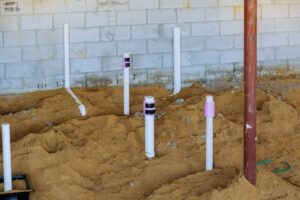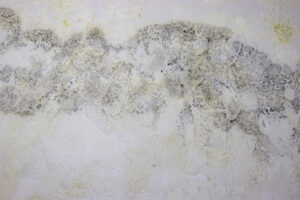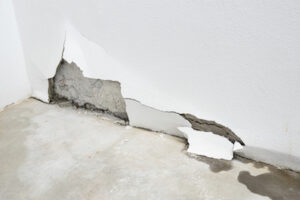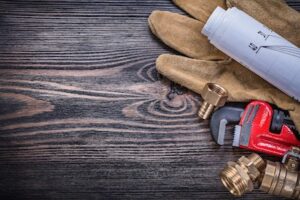How to Identify the Signs of a Clogged Crawl Space Sewer Line
If you’re a homeowner, it’s essential to be familiar with the various systems and components that make up your property. One of the critical systems that require attention is the crawl space sewer line. The crawl space is the area beneath your home’s first floor, and it’s the pathway for pipes and other systems to move around. A clogged crawl space sewer line can cause severe issues in your home, such as backed-up sewage, odors, water damage, and even health hazards. That’s why it is essential to identify the signs of a clogged crawl space sewer line early so that you can address the issue promptly. However, how do you identify the signs of a clogged crawl space sewer line?
There are a few ways how to identify signs of a clogged crawl space sewer line in your home. The most identifiable signs are foul smells, slow drains, backed-up drains, mold and mildew, water damage, and insect infestations.
In this blog post, we’ll discuss how to identify signs of a clogged crawl space sewer line, what steps you can take to prevent and fix the issue and crawl space sewage cleanup tips.

The Common Signs of a Clogged Crawl Space Sewer Line
The first step in identifying a clogged crawl space sewer line is to understand the warning signs. Some of the most common signs of a clogged sewer line in your crawl space include:
1. Foul Smells
If you notice unpleasant odors emanating from your crawl space, it could be a sign of a clogged sewer line. This odor is caused by the accumulation of sewage waste that has built up in your pipes.
2. Slow Drains
Slow drains in your home can be an indication of a larger problem, such as a clogged sewer line. When waste materials accumulate in the pipes, they can restrict water flow and cause blockages. If left untreated, a clogged sewer line can lead to more serious issues, such as sewage backups and costly repairs. Therefore, it’s important to address slow drains promptly to prevent further damage to your plumbing system.
3. Backed-Up Drains
A clogged sewer line can cause water from flushing your toilet or running water down your sink or bathtub drain to back up into your home. This problem can create a messy and unpleasant situation, making it impossible to use your plumbing fixtures. If left unaddressed, a clogged sewer line can lead to extensive water damage and mold growth, which can be hazardous to your health and costly to repair. Therefore, it’s crucial to seek professional help immediately if you notice any signs of a clogged sewer line.

4. Mold and Mildew
When a sewer line becomes clogged, the water and waste that cannot flow out of the house can build up in the pipes and eventually overflow. So, if you notice puddles of water in your crawl space, it may be due to a clogged sewer line. The water can come from overflowing drains or leaky pipes, and it can lead to mold growth and other health hazards.
This overflow can create a damp and humid environment, which is ideal for mold and mildew growth. If left unchecked, mold and mildew can spread quickly and release spores that can cause health issues, especially for those with allergies or respiratory problems. Therefore, if you notice mold or mildew growing in your crawl space, it’s essential to have a professional plumber inspect your sewer line to determine the source of the problem and address it as soon as you can.
5. Water Damage
If you notice water damage in your crawl space or basement, it could be a sign of a clogged sewer line. This is because the water is not able to flow freely through the pipes, causing it to overflow and cause water damage.
If you notice any of these warning signs, it’s essential to take action promptly to prevent further damage to your property. The first step is to call in a professional for crawl space sewage cleanup. These professionals have the expertise and equipment necessary to safely and effectively remove sewage waste and clean your crawl space.

6. Insect Infestation
A clogged sewer line can attract insects such as cockroaches, drain flies, and other pests. If you notice an increase in the number of insects in your crawl space, it may be due to a clogged sewer line.
If you notice any of these signs, it is crucial to address the issue promptly. A clogged crawl space sewer line can cause significant damage to your home and can pose health hazards to you and your family. It is recommended that you contact a professional plumber to assess the situation and provide a solution.
How to Prevent Clogged Sewer Lines
Once your crawl space has been cleaned, it’s essential to take steps to prevent future clogs. As preventing a clogged crawl space sewer line is much easier than dealing with the issues it can cause. Here are some tips to help you prevent a clogged sewer line in your crawl space:
– Regular Inspections
It’s essential to have your crawl space inspected regularly to ensure that everything is functioning correctly. Have your sewer lines inspected and cleaned at least once a year by a professional plumber. This will help identify any potential issues before they become significant problems.
– Regular Maintenance
Regular maintenance of your sewer line is crucial to ensure that it functions properly and does not cause any clogs or backups. This can be achieved by cleaning your drains regularly, which can help prevent debris from building up and causing blockages. Additionally, checking for leaks and making any necessary repairs promptly can help prevent more significant issues from occurring down the line.

– Proper Disposal
Proper disposal of waste is crucial in preventing a clogged sewer line. So be mindful of what you flush down your toilet and put down your sink and drains. Avoid flushing anything down the toilet that is not human waste or toilet paper. Do not pour cooking oil, grease, or fat down the drain as it can solidify and cause a clog.
– Install a Backwater Valve
A backwater valve is a device that prevents sewage from flowing back into your home in the event of a sewer line backup. This device can be installed in your crawl space to provide added protection against clogs and backups.
Installing a backflow preventer can prevent water from flowing back into your home’s sewer system, causing a clog. This device is installed in the main sewer line and prevents water from flowing in the opposite direction.
– Use a Strainer
Using a strainer in your sink and shower drains can help prevent hair, soap scum, and other debris from flowing into your sewer line.
– Keep Trees and Shrubs Away
Roots from trees and shrubs can grow into your sewer line and cause a clog. Keep trees and shrubs at least 10 feet away from your sewer line.
Final Thoughts
A clogged crawl space sewer line can cause significant damage to your property if not addressed promptly. If you notice any warning signs of a clogged sewer line, such as foul smells, slow drains, backed-up drains, mold, and mildew, or water damage, it’s essential to call in a professional for crawl space sewage cleanup.
